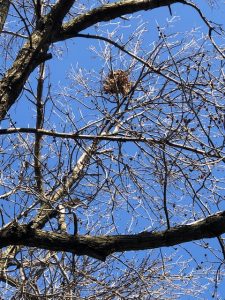 I cannot be accused of being a science denier.
I cannot be accused of being a science denier.
I’m at a loss to understand why some people refuse to wear masks during a pandemic or ignore the urgent attention climate change requires.
But sometimes, I find myself copping the attitude that I don’t want to know — I don’t want to know exactly how something works.
Several year ago, when I visited the Chicago Botanic Garden with a friend who was an avid gardener, I recall how she spewed out the names of flowers and shrubs non-stop, like a sprinkler intent on giving new sod a constant and thorough soaking.
I smiled blankly and commented on the vibrantly orange shade of a petal. I wanted to feel my way through the garden and not concern myself with knowing it beyond my senses.
Few things in my everyday life bring me to this state of wonder, a sort of being-ness, like the trees in my neighborhood.
Many of them are pretty old. The red brick 3-flats and single family homes on nearby blocks are about a century old and the trees which flank the streets are quite tall.
There is one tree I really love to look at. Even in the winter, when it is unashamedly naked, I will linger on the sidewalk, next to the small patch of grass where its roots have grown deep, and stare towards the tips of its branches.
This tree holds five bird nests.
How did these nests manage to stay in place despite such a fragile grasp? Through a season of cold temperatures and unkind winds?
Did any birds make their home here during the winter?
Do birds, after migration, come back to the same nests?
How are nests built? What are they made of?
I asked myself a lot of questions. I was drawn to investigate some things.
I learned that nests are primarily used for laying and incubating eggs, although some species also use nests for sleeping and resting.
Nests, depending on the species of bird, can be simply or more elaborately constructed. A common style, referred to as a “cup,” is a hemisphere with a deep depression for cradling eggs. Sparrows and various species of perching birds or songbirds build cups.
I learned that female birds often take the lead role in construction. Sometimes, the male takes the lead as part of a courtship ritual. But, there is often a partnership among the sexes, splitting the tasks of building and lining a nest.
I discovered that rarely do birds re-use a nest, but many birds will re-cycle building materials — grasses, mud and twigs — that were used before in other nests.
I guess this was as much as I wanted to know.
Upon entering the first week of April, so many people seem to be looking at the ground, keeping an eye out for buds or shoots to poke through, while, this week, I found myself looking skyward, taking note of these structures that have amazed me by surviving the winter.
Why are nests so fascinating to me?
What’s the allure? Why do I notice them, especially considering they’re designed to blend in?
I think I’m affected by the idea of HOME. That’s what “nesting” means to me. I like thinking that any creature has a place to rest, a place that requires and rewards their efforts to build and claim a spot for themselves, a place where they can be comfortable.
Beyond this, I’m okay with not knowing all the details. How do nests of sparrows and pigeons differ? How do birds know which nest is theirs? I don’t know. And that’s okay.
Embracing the mystery is no small thing.


Leave a comment